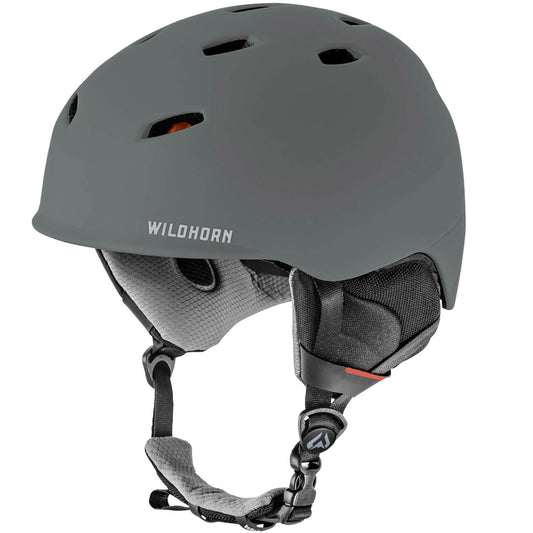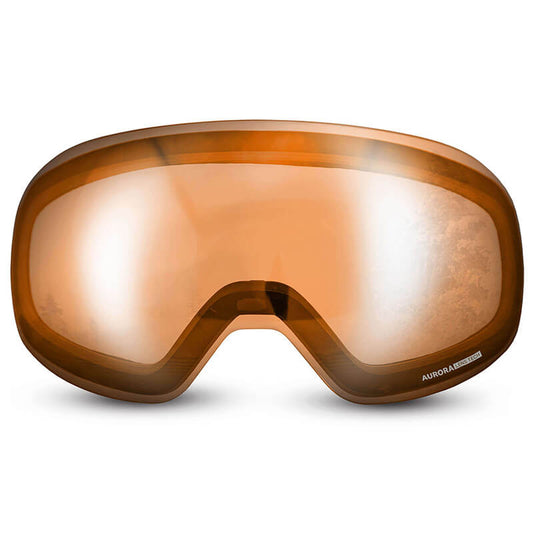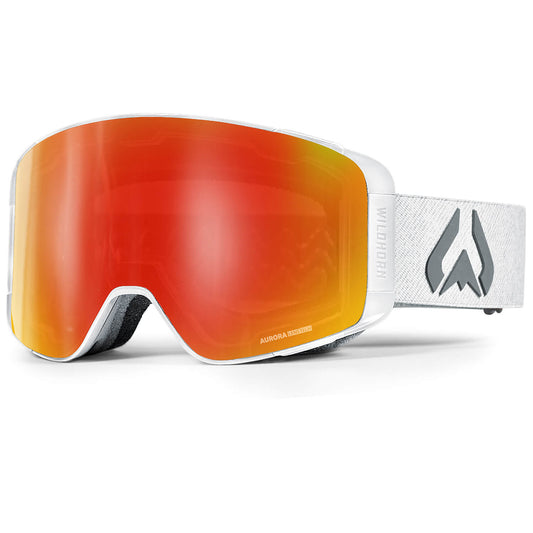Ski Goggles: The Ultimate Buyer’s Guide
By: Mark TFinding the perfect pair of ski goggles can be difficult—mostly because people don’t know what to look for. With so many brands, accessories, and styles available, it’s almost impossible to keep track of them all.
Thankfully, we stepped in.
This is no ordinary article. We’ve taken everything you could want to know when purchasing ski goggles and compiled it into an Ultimate Buyer’s Guide. Get strapped in. Here’s what you need to know about finding a quality pair:
What Is the Purpose of Snow Goggles?
Eye protection is the ultimate purpose of ski goggles. Snow goggles specifically function to prevent damage caused by the sun, cold, and other obstacles. They have tinted lenses to stop too much UV light from entering your eyes, padding to seal warmth in, and tons of other additions to keep you safe. While they differ in quality and effectiveness, every pair of ski goggles on the market has passed safety tests. As of now, there is not one common standard, so check the process of the company you purchase from.
What Is the Best Material for Snow Goggles?

The goggles should be cold-resistant and waterproof. Snow goggle frames are most often made of polyurethane (PU), although other durable, flexible plastics work, too. For comfort, ski goggles have a layer of foam around the frame, which is sometimes made of polystyrene (styrofoam). The lenses are made out of polycarbonate. Polycarbonate is shatter and temperature-resistant, which makes it a great material to cover your eyes with while you’re participating in a cold sport. Plus, polycarbonate is customizable, making it easy to add any extra features you need. Finally, strap material is usually made from elastic nylon or a cotton/poly-based weave.
Now that we’ve covered the basic materials of snow goggles, let's look at the different forms they take.
What Are the Different Shapes of Snow Goggles?
Snow goggle lenses come in three shapes: cylindrical, spherical, and toric. Although they look similar at first glance, they each have slightly different optical qualities.
1. Cylindrical
Cylindrical goggle lenses curve around your head horizontally and are flat vertically. Although this shape can inhibit your peripheral vision, cylindrical ski goggle lenses are typically wide enough to avoid this issue. This shape is very stylish and ideal for all skill levels. Check out our cylindrical snow goggles here.
2. Spherical
Spherical ski goggles curve vertically as well as horizontally on your face. This shape widens your field of vision and reduces glare. This lens shape tries to match the curvature of the eye and is one of the most popular shapes for skiers. See our spherical snow goggles here.
3. Toric
Toric goggle lenses are a compromise between cylindrical and spherical. They still curve horizontally and vertically, but the vertical curve is less pronounced. This ski goggle shape is the least common and typically more expensive. These goggles are made to follow your natural head shape, so your field of vision is the most open.
Ski Goggle Features

Ski goggles may seem pretty straightforward, but several components go into making them as useful as possible for you. Different kinds of snow goggles have different strengths and features to support them. Here are some of the options:
1. Different Goggle Lenses
Here’s the rundown.
Different ski goggle lenses are available in different tints. These different tints let in different amounts of light. Basically, lighter-tinted lenses are better for cloudy or darker days because they let in more light. Darker-tinted lenses filter out more light, so they are better for super bright, sunny days. Most people agree that you should only use clear lenses at night because they don’t filter light at all. The degree to which light is filtered is measured by something called VLT or Visible Light Transmission. Lower percentages mean more light is filtered while higher percentages mean less light is filtered. Be sure to check the VLT on the option you want and make sure it is compatible with the conditions you will be facing.
Many high-quality snow goggles allow you to switch out lenses depending on the conditions you’re skiing in. You can choose from magnetic or snap-in options. At Wildhorn, we carry multiple lens options so that you can customize your VLT. Look at our interchangeable ski goggle lenses.
2. Photochromic Lenses
Photochromic lenses are another way ski goggles can regulate VLT, but they are not as common. The idea behind them is that the lens has a chemical on it that reacts to light. Because of the chemical, the lenses will automatically adjust to the tint you need. This is convenient, but there are some downsides. The chemical can also react to temperature, meaning the tint won’t always be 100% accurate if it gets super cold. Additionally, the chemical isn’t compatible with other coatings. However, if convenience is your main priority, photochromic lenses are worth a look.
3. Anti-Fog Technology
Snow goggles can eliminate fog in a few different ways. The first is the double lens. This prevents fogging because the outer lens is exposed to the elements while the inner lens stays warm and dry.
Some ski goggles have an anti-fog chemical coating. This works very well, but you have to be careful not to scratch or rub the inside of your goggles. If they get dirty or wet, shake them out gently and use a microfiber cloth to finish cleaning.
4. Ventilation
All ski goggles require ventilation. A good ventilation system will be compatible with the helmet you’re wearing. This means that air can move through your snow goggles and helmet interchangeably with ease. Good ventilation helps regulate your temperature, prevent fogging, and keep your equipment nice.
What Size of Snow Goggles Do You Need?
Now that you know what you want your goggles to look like, let’s talk about size. Your goggles have to fit your face, head, and your helmet. Ski goggles that don’t fit well can either end up being uncomfortable or loose. Most goggles have elastic straps to fit a variety of head shapes and sizes. They should not put too much pressure on your face and should come off with a good head shake. This goes without saying, but your snow goggles are not meant to inhibit vision. If you cannot see because of the way they are sitting on your face, they are the wrong size. You also want to make sure the foam lining of the goggle makes contact with your face around the entire edge.
Your ski goggles will feel like an extension of your helmet if they fit right. The space between the helmet and the goggles on your forehead should be small (if it’s there at all). You need to be able to put them on at the same time and feel comfortable. If you wear your goggles under your helmet, they will fit differently. There’s no one-size-fits-all solution (literally) to how your snow helmet and goggles should lay. Simply ensure you feel comfortable and secure.
How Much Do Snow Goggles Cost?
The price of ski goggles can range anywhere from $20-$200. Adding features will change the price. When deciding if a purchase is worth it, be sure to check the reviews and the manufacturer’s product guarantees. Good snow goggles are available for every budget and situation. At Wildhorn, we offer multiple types of goggles in different price ranges to be accessible to everyone.
Check out our snow goggle collection if you’re interested.
How Long Do Snow Goggles Last?

There’s no reason to get new goggles every other ski trip. Good-quality ski goggles can last anywhere from three to eight years, depending on how often you use them. Taking care of your goggles by replacing their lenses and regularly cleaning them can lengthen their lifespan even more. The only set rule is to replace your snow goggles if anything is broken or if you’ve had a bad accident.
This Ultimate Buyer’s Guide included everything you need to know about buying the perfect set of ski goggles. We have a whole library of information to help you on your outdoor adventures, though. If you’d like to learn how to take care of your snow goggles, check out our blog, “4 Step Guide to Proper Snow Goggle Care.” Or, to learn everything about ski helmets, check out our other guide, “Ski Helmets: The Ultimate Buyer’s Guide.”







